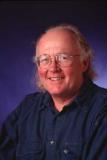Research Interests
The recent demonstration that eye tissue is formed after ectopic expression of the eyeless gene suggests that how tissues differentiate is driven by a limited number of "master" genes. Differentiated tissues are commonly formed through repetition of cell types. The model is that changing from one type to another is a consequence of overexpression of the "master" gene inhibiting another.. The ability of any gene to have this effect is the basis for an overexpression screen to select such key genes. Such a screen is now underway in my lab through bringing a mobile copy of the yeast enhancer element that binds the transcription factor Gal4 to lie adjacent to previously unknown genes. Activation of the enhancer through Gal4 expression will be recognized through changes in cellular differentiation if the enhancer is adjacent to a key gene. In particular, cells in the wing margin differentiate into three kinds of sensory bristles plus trichome-bearing cell. I am interested in finding the genes that determine these choices and their pattern in the margin, through overexpression changes in phenotype. Molecular genetic analysis will be used to identify their normal roles in development.
Selected Publications
Takashima, S, Mirtchyan, M. Younossi-Hartenstein, A., Merriam, J.R. and Hartensteinn, V., "The behavior of Drosophila adult hindgut stem cells controlled by Wnt and Hh signaling", Nature 454: 651-655 (2008).
Evans, C. Merriam, J.R., and Aguilera, R.J., "Drosophila acid DNase is a homolog of mammalian DNase II", Gene 295: 61-70 (2002).
Johnson, L., and Merriam, J., "Interactive Genetics", Hayden-McNeil Publishing, Inc. Plymouth, MI (2001).
Brummel, T., Abdollah, S., Haerry, T.E., Shimell, M.J., Merriam, J., Raftery, L., Wrana, J.L., and O?Connor, M.B., "The Drosophila Activin receptor Baboon signals through dSmad2 and controls cell proliferation but not patterning during larval development", Genes & Development 13: 98-111 (1999).
Merriam, J., "Antonio and Sturt: an interaction", In: Int. J. Dev. Biol 42: 525-527 (1998).
Saebøe-Larssen S, Lyamouri M, Merriam J, Oksvold MP, Lambertsson A., "Ribosomal protein insufficiency and Minute syndrome in Drosophila: a dose-response relationship", Genetics 148: 1215-1224 (1998).
Casares, F., Bender, W., Merriam, J., and Sanchez-Herrero, E., "Interactions of Drosophila Ultrabithorax Regulatory Regions with Native and Foreign Promoters", Genetics 145: 123-137 (1997).
Merriam, J., "Drosophila Genome", In: Molecular Biology and Biotechnology (1995).
Andersson, S., Saebøe-Larssen, S., Lambertsson, A., Merriam, J. and Jacobs-Lorena, M., "A Drosophila third-chromosome minute locus encodes a ribosomal protein", Genetics 137: 513-520 (1994).
Crozatier, M., Kongsuwan, K., Ferrer, P., Merriam, J., Lengyel J., and Vincent A., "Single amino acid exchanges in separate domains of the Drosophila serendipity delta zinc finger protein cause embryonic and sex biased lethality", Genetics 131: 905-916 (1992).
Chipperfield, M., Maidek, M., Pearson, P., Ashburner, M., Glover, D.M., Saunders, R.D., Duncan, I., Hartl, D., Merriam J., Lee, G., Johnsen, J., Kafatos, F.C., Siden-Kigmos, I., Louis, C., Savakis, C., "Genome maps 1991 (wall chart)", Science 254: 247-262 (1991).
Merriam, J., M. Ashburner, D.L. Hartl, and F.C. Kafatos, "Toward cloning and mapping the genome of Drosophila", Science 254: 221-225 (1991).
Pignoni, F., R. Baldarelli, E. Steingrimsson, R. Diaz, A. Patapoutian, J. Merriam and J. Lengyel, "The Drosophila gene tailless is expressed at the embryonic termini and is a member of the steroid receptor super family", Cell 62: 151-163 (1990).
Merriam, J., S. Adams, G. Lee, and D. Krieger, "Cloned genes of Drosophila melanogaster and literature guide", In: Genetic Maps 5: (1990).
Merriam, J., "The Drosophila Clone List by Chromosome Location", In: D.I.S 67: 111-136 (1988).


